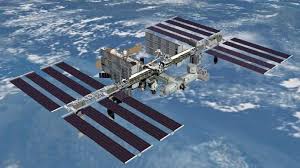NASA’s New Mission to Study Storms
Science & Technology SciencePosted by NewAdmin on 2025-03-06 08:52:50 |
Share: Facebook | Twitter | Whatsapp | Linkedin Visits: 66

NASA has launched a new mission aimed at studying storms and their impact on climate models. This initiative is designed to enhance our understanding of extreme weather patterns, including hurricanes and thunderstorms, by collecting high-resolution atmospheric data. The mission will employ advanced satellite technology to monitor storm formations, track their development, and analyze their effects on Earth's climate.
One of NASA’s recent projects, the TROPICS (Time-Resolved Observations of Precipitation structure and storm Intensity with a Constellation of Smallsats) mission, is focused on providing frequent and detailed observations of tropical storms. By using multiple small satellites, TROPICS can capture images and collect data every 30 to 60 minutes, offering unprecedented insights into storm intensity, rainfall, and structural changes. This data is critical for improving weather forecasting models and understanding how climate change influences the behavior of severe storms.
Additionally, NASA has been working on other related atmospheric studies, such as mapping dust storms and analyzing air pollution using advanced instruments like TEMPO (Tropospheric Emissions: Monitoring of Pollution). These missions contribute to a broader effort to track environmental changes and enhance global climate models. Scientists hope that the data collected will not only help predict extreme weather more accurately but also provide valuable information for disaster preparedness and response efforts worldwide.
This mission is part of NASA’s ongoing commitment to studying Earth's climate and weather systems, using cutting-edge space technology to improve forecasting, mitigate risks, and develop more reliable climate predictions.
Search
Categories
Recent News
- Hyderabad's Biryani Scam: When Food Delivery Meets Fraud
- RBI's UDGAM Portal: Hyderabad's Cyber Fraud Warning
- Hyderabad Gears Up for Presidential Visit: Traffic Advisory Issued
- Hyderabad Crypto Scam: Unraveling a Multi-State Fraud
- Cyber Scams Target Unsuspecting Citizens via RBI Portal
- Telangana's Tech-Driven Policing: Drones Take to the Skies
- RBI Governor Prioritises Digital Security: A Strategic Shift
- Hyderabad's Massive Anti-Drug Operation: 72 Foreigners Deported
Popular News
- Navigating IPO Market Dynamics Amid Volatility and Regulatory Changes
- Innovative Green Practices and Environmental Initiative
- Massive Worldwide Microsoft Outage Disrupts Multiple Sectors
- తెలుగుదేశం పార్టీ - పేదరికాన్ని నిర్మూలించడంలో వాగ్దానం
- Universities Embrace Remote Learning Technologies Amidst Ongoing Pandemic